Abstract
A total of 1537 strains of Salmonella typhimurium belonging to seven prevalent phage types were examined on solid media for their ability to ferment rhamnose, xylose and inositol, for colicine production and for nutritional requirements. Most of the strains in each phage type were almost completely homogeneous, especially in their sugar fermentation reactions. However, strains of phage type 1 a/2 were not homogeneous, but could be assigned to one of four subgroups on the basis of ability to ferment inositol, inhibition of growth by meso-tartrate and auxotrophy for nicotinic acid. The subdivision proved to have epidemiological value. The inhibition of growth by meso-tartrate was observed on a defined medium containing citrate as the energy source. Inhibition did not occur if glucose, casein hydrolysate or aspartic acid were added to the medium.
Full text
PDF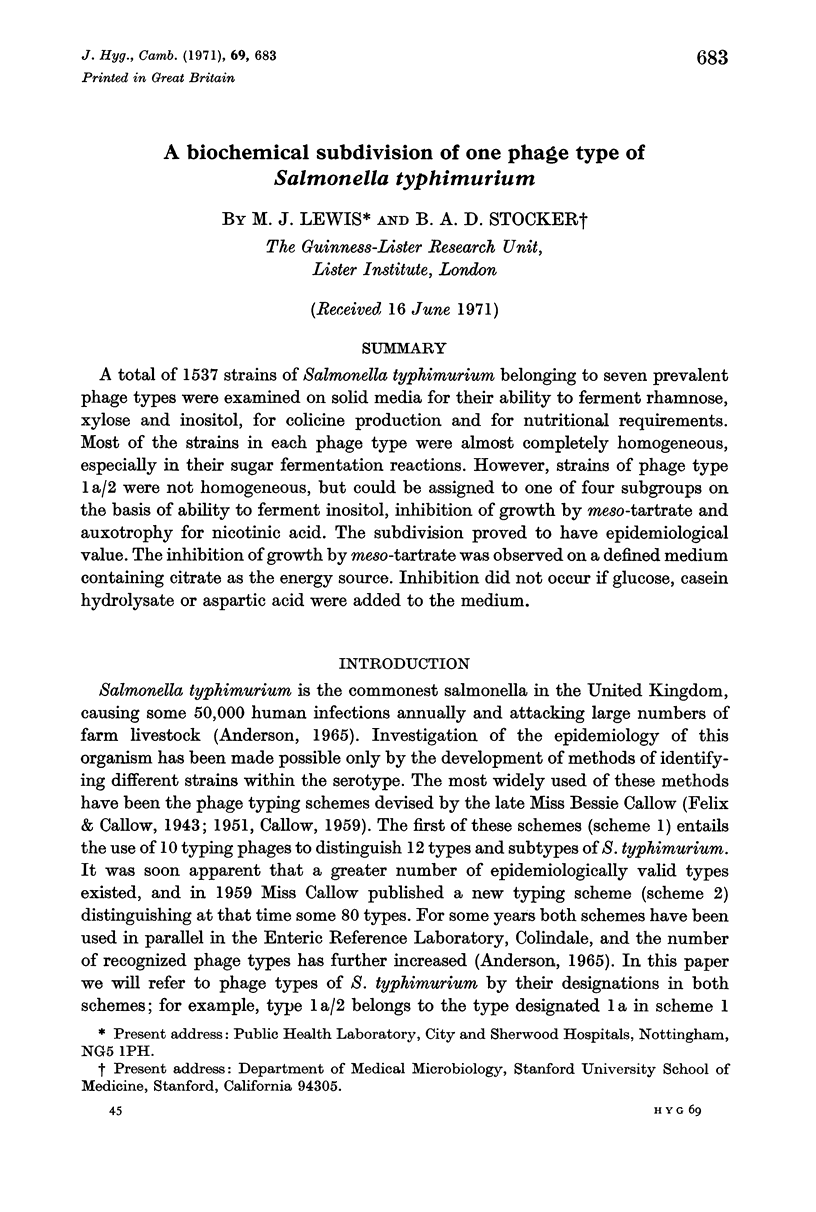
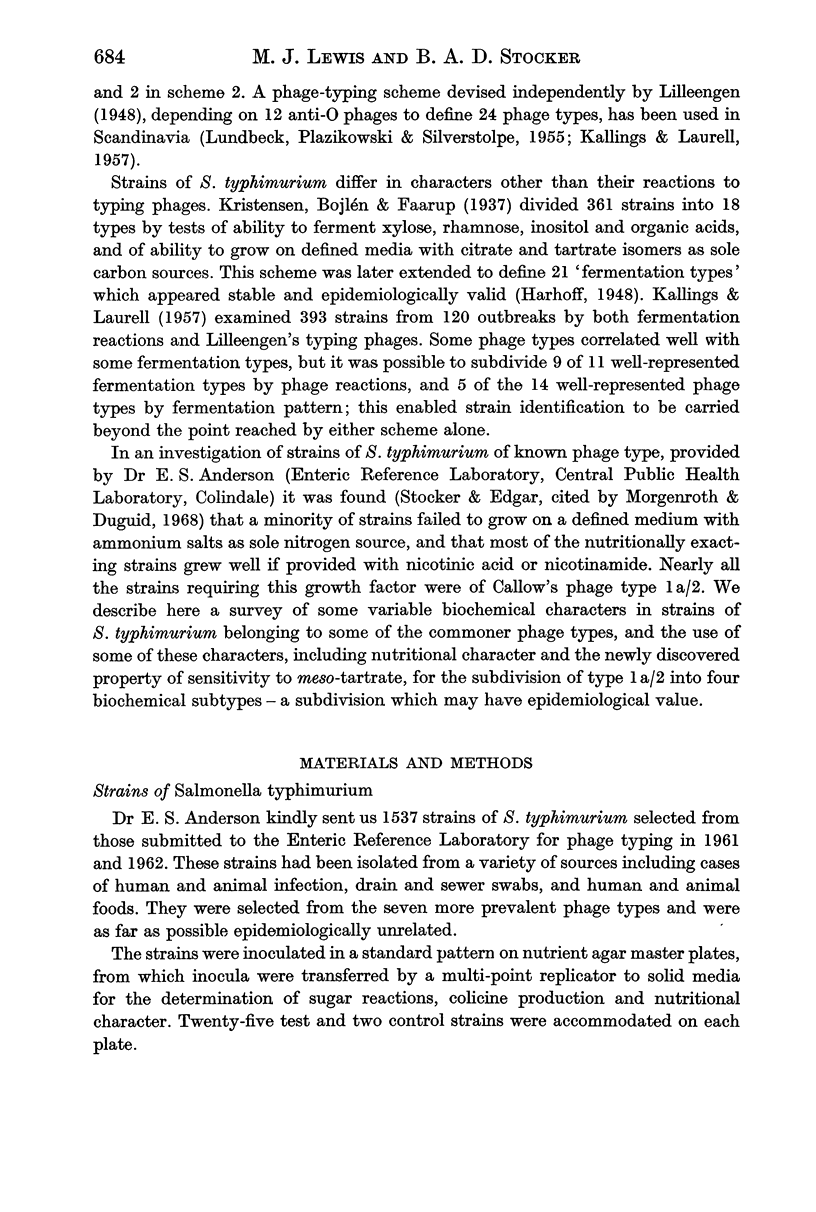
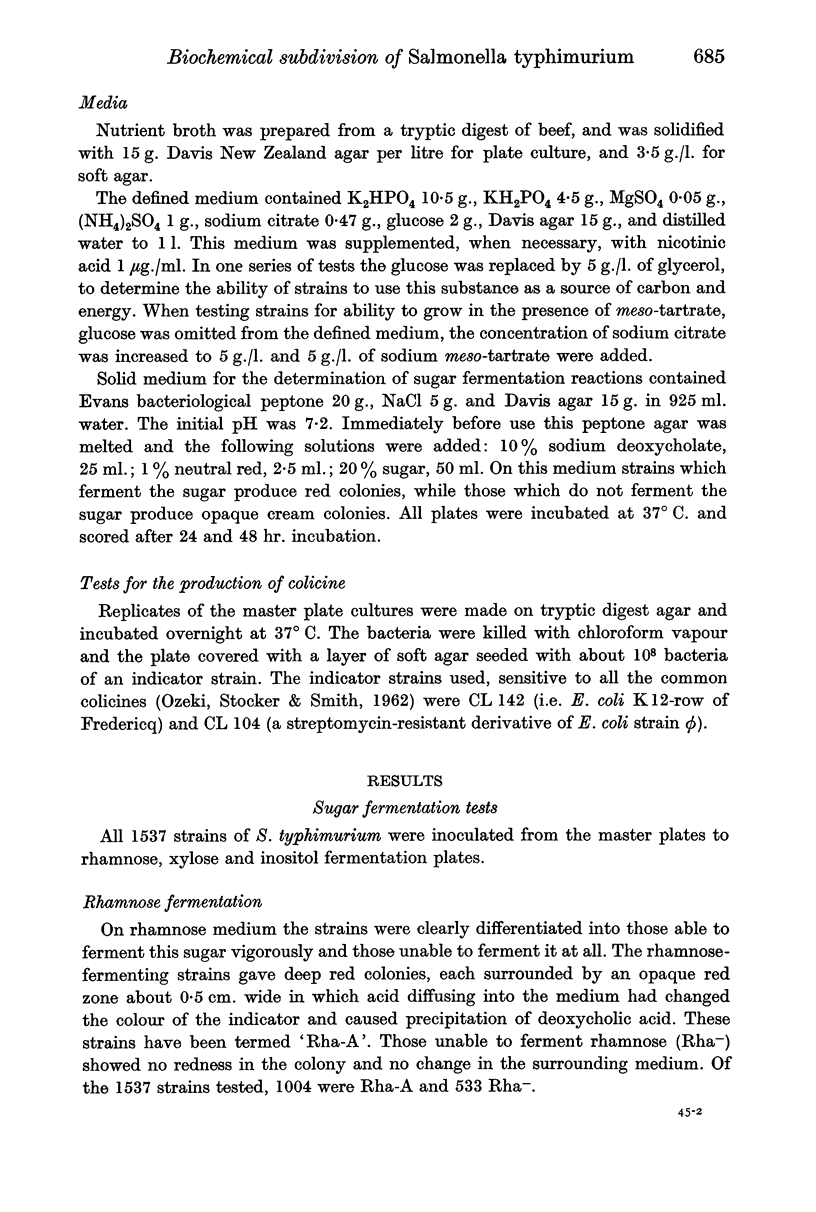
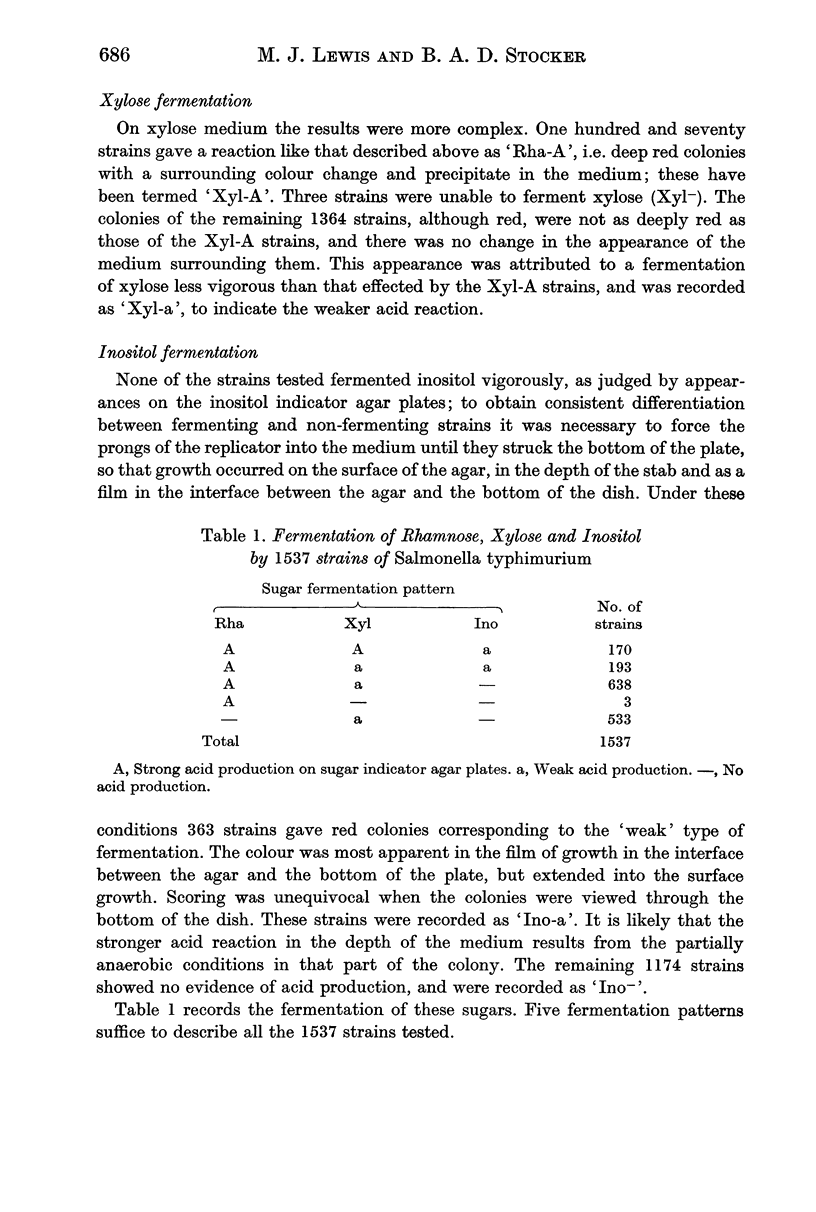
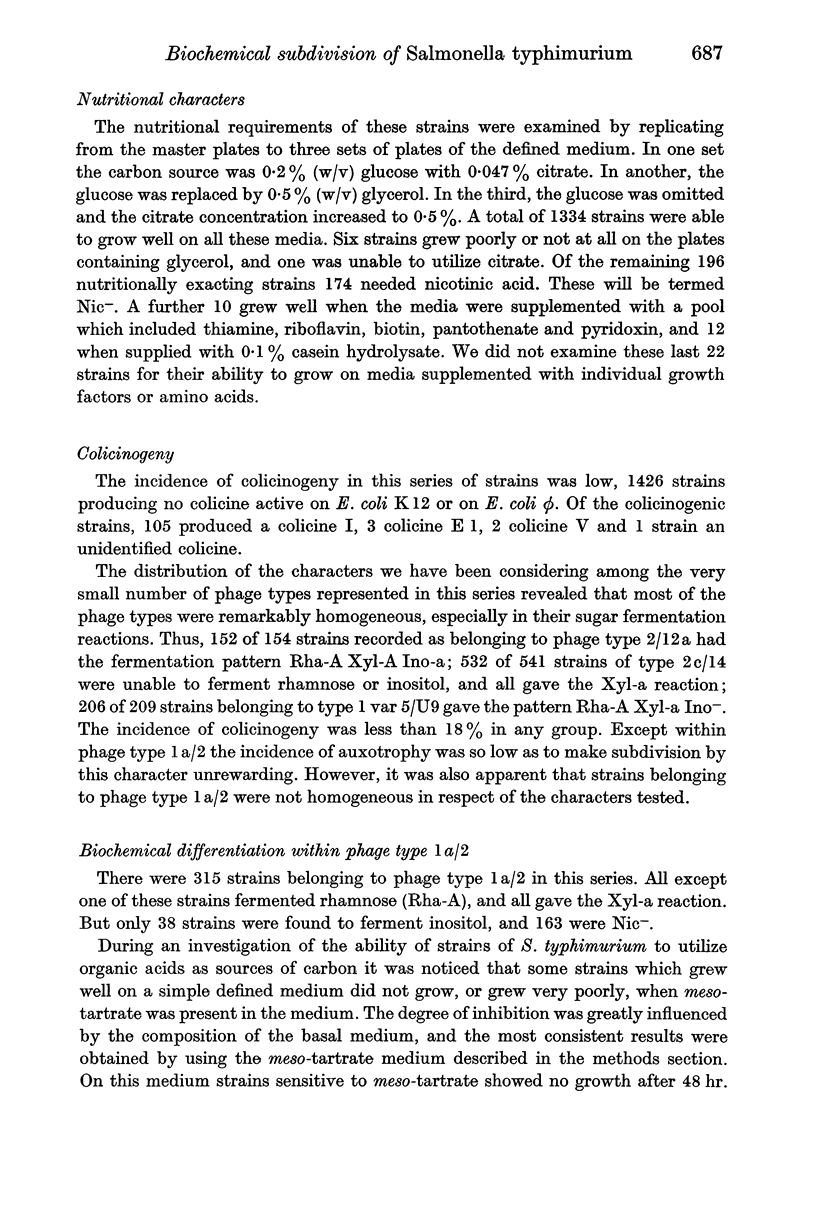
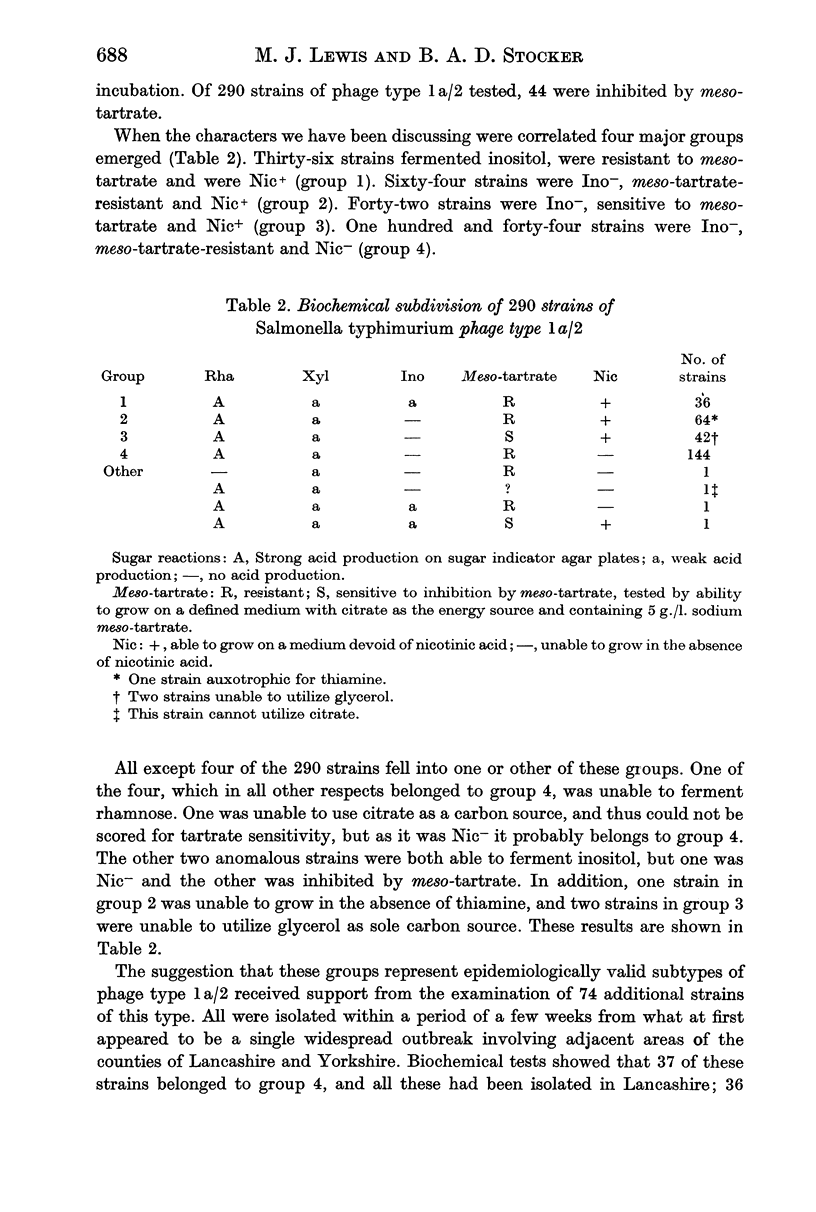
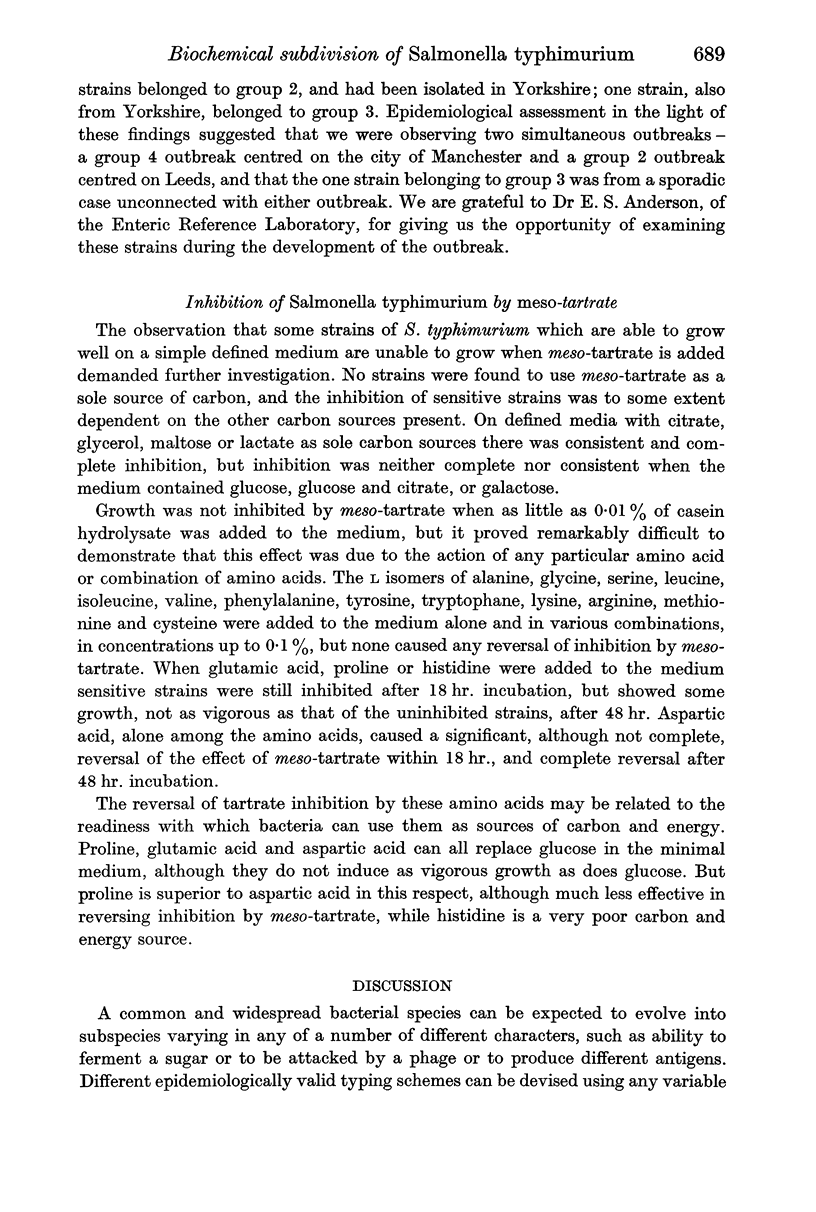
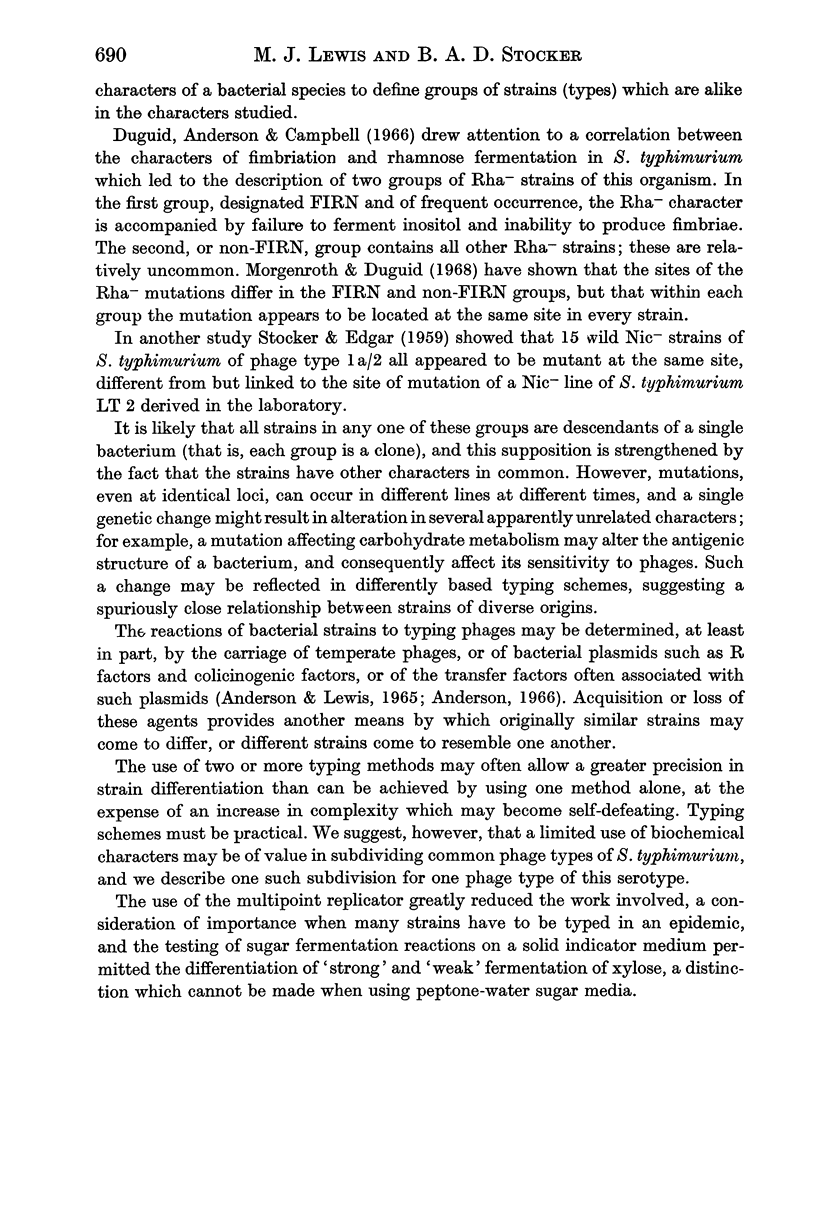
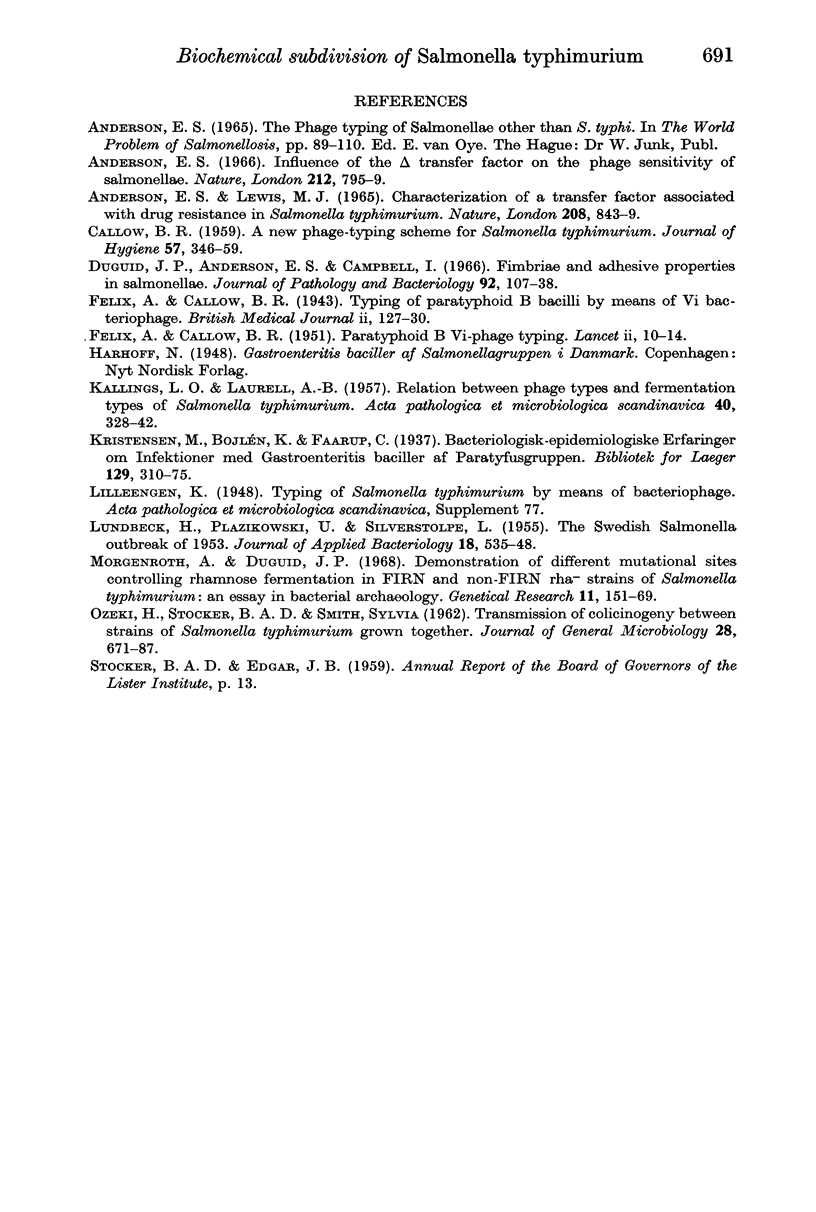
Selected References
These references are in PubMed. This may not be the complete list of references from this article.
- Anderson E. S. Influence of the delta transfer factor on the phage sensitivity of salmonellae. Nature. 1966 Nov 19;212(5064):795–799. doi: 10.1038/212795a0. [DOI] [PubMed] [Google Scholar]
- Anderson E. S., Lewis M. J. Characterization of a transfer factor associated with drug resistance in Salmonella typhimurium. Nature. 1965 Nov 27;208(5013):843–849. doi: 10.1038/208843a0. [DOI] [PubMed] [Google Scholar]
- CALLOW B. R. A new phage-typing scheme for Salmonella typhi-murium. J Hyg (Lond) 1959 Sep;57:346–359. doi: 10.1017/s0022172400020209. [DOI] [PMC free article] [PubMed] [Google Scholar]
- Duguid J. P., Anderson E. S., Campbell I. Fimbriae and adhesive properties in Salmonellae. J Pathol Bacteriol. 1966 Jul;92(1):107–138. doi: 10.1002/path.1700920113. [DOI] [PubMed] [Google Scholar]
- FELIX A., CALLOW B. R. Paratyphoid- B Vi-phage typing. Lancet. 1951 Jul 7;2(6671):10–14. doi: 10.1016/s0140-6736(51)93451-4. [DOI] [PubMed] [Google Scholar]
- KALLINGS L. O., LAURELL A. B. Relation between phage types and fermentation types of Salmonella typhi murium. Acta Pathol Microbiol Scand. 1957;40(4):328–342. [PubMed] [Google Scholar]
- Morgenroth A., Duguid J. P. Demonstration of different mutational sites controlling rhamnose fermentation in FIRN and non-FIRN rha-strains of Salmonella typhimurium: an essay in bacterial archaeology. Genet Res. 1968 Apr;11(2):151–169. doi: 10.1017/s0016672300011320. [DOI] [PubMed] [Google Scholar]
- OZEKI H., STOCKER B. A., SMITH S. M. Transmission of colicinogeny between strains of Salmonella typhimurium grown together. J Gen Microbiol. 1962 Sep;28:671–687. doi: 10.1099/00221287-28-4-671. [DOI] [PubMed] [Google Scholar]


